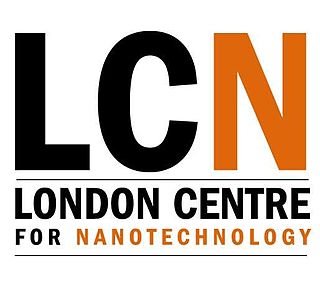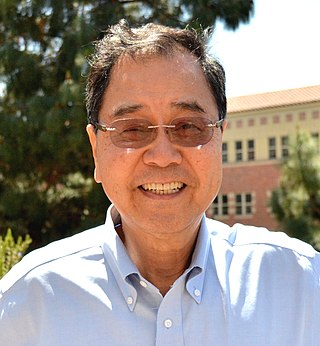
The University of Waterloo is a public research university with a main campus in Waterloo, Ontario, Canada. The main campus is on 404 hectares of land adjacent to "Uptown" Waterloo and Waterloo Park. The university also operates three satellite campuses and four affiliated university colleges. The university offers academic programs administered by six faculties and thirteen faculty-based schools. Waterloo operates the largest post-secondary co-operative education program in the world, with over 20,000 undergraduate students enrolled in the university's co-op program. Waterloo is a member of the U15, a group of research-intensive universities in Canada.

Perimeter Institute for Theoretical Physics is an independent research centre in foundational theoretical physics located in Waterloo, Ontario, Canada. It was founded in 1999. The institute's founding and major benefactor is Canadian entrepreneur and philanthropist Mike Lazaridis.

Mihal "Mike" Lazaridis is a Canadian businessman, investor in quantum computing technologies, and co-founder of BlackBerry, which created and manufactured the BlackBerry wireless handheld device. With an estimated net worth of US$800 million, Lazaridis was ranked by Forbes as the 17th wealthiest Canadian and 651st in the world.

The Fields Institute for Research in Mathematical Sciences, commonly known simply as the Fields Institute, is an international centre for scientific research in mathematical sciences. It is an independent non-profit with strong ties to 20 Ontario universities, including the University of Toronto, where it occupies a purpose-built building on the St. George campus. Fields was established in 1992, and was briefly based at the University of Waterloo before relocating to Toronto in 1995.
The Faculty of Science is one of six faculties at the University of Waterloo.

The London Centre for Nanotechnology is a multidisciplinary research centre in physical and biomedical nanotechnology in London, United Kingdom. It brings together three institutions that are world leaders in nanotechnology, University College London, Imperial College London and King's College London. It was conceived from the outset with a management structure allowing for a clear focus on exploitation and commercialisation. Although based at UCL's campus in Bloomsbury, the LCN includes research in departments of Imperial's South Kensington campus and in King's Strand campus.
The Waterloo Institute for Nanotechnology (WIN) is located at the University of Waterloo and is co-located with the Institute for Quantum Computing in the Mike and Ophelia Lazaridis Quantum-Nano Centre (QNC). WIN is currently headed by Dr. Sushanta Mitra.
Raymond Laflamme, OC, FRSC is a Canadian theoretical physicist and founder and until mid 2017, was the director of the Institute for Quantum Computing at the University of Waterloo. He is also a professor in the Department of Physics and Astronomy at the University of Waterloo and an associate faculty member at Perimeter Institute for Theoretical Physics. Laflamme is currently a Canada Research Chair in Quantum Information. In December 2017, he was named as one of the appointees to the Order of Canada.
IOP Publishing is the publishing company of the Institute of Physics. It provides publications through which scientific research is distributed worldwide, including journals, community websites, magazines, conference proceedings and books. The Institute of Physics is a scientific charity devoted to increasing the practice, understanding and application of physics. Any financial surplus earned by IOP Publishing goes to support physics through the activities of the Institute.

The Faculty of Engineering is one of six faculties at the University of Waterloo in Waterloo, Ontario, Canada. It has 8,698 undergraduate students, 2176 graduate students, 334 faculty and 52,750 alumni making it the largest engineering school in Canada with external research funding from 195 Canadian and international partners exceeding $86.8 million. Ranked among the top 50 engineering schools in the world, the faculty of engineering houses eight academic units and offers 15 bachelor's degree programs in a variety of disciplines.
Quantum nanoscience is the basic research area at the intersection of nanoscale science and quantum science that creates the understanding to enable development of nanotechnologies. It uses quantum mechanics to explore and use coherent quantum effects in engineered nanostructures. This may eventually lead to the design of new types of nanodevices and nanoscopic scale materials where functionality and structure of quantum nanodevices are described through quantum phenomena such as superposition and entanglement. With the growing work toward realization of quantum computing, quantum has taken on new meaning that describes the effects at this scale. Current quantum refers to the quantum mechanical phenomena of superposition, entanglement and quantum coherence that are engineered instead of naturally-occurring phenomena.
Michele Mosca is co-founder and deputy director of the Institute for Quantum Computing at the University of Waterloo, researcher and founding member of the Perimeter Institute for Theoretical Physics, and professor of mathematics in the department of Combinatorics & Optimization at the University of Waterloo. He has held a Tier 2 Canada Research Chair in Quantum Computation since January 2002, and has been a scholar for the Canadian Institute for Advanced Research since September 2003. Mosca's principal research interests concern the design of quantum algorithms, but he is also known for his early work on NMR quantum computation together with Jonathan A. Jones.
Science and Technology is a faculty at Aarhus University. Science and Technology offers sixteen BSc degree programmes, eight BEng degree programmes and twenty-eight MSc degree programmes, nine of which are MEng degree programmes. ST also offers a small number of further and continuing education programmes. Niels Chr. Nielsen is the dean of Science and Technology.

Kang Lung Wang is recognized as the discoverer of chiral Majorana fermions by IUPAP. Born in Lukang, Changhua, Taiwan, in 1941, Wang received his BS (1964) degree from National Cheng Kung University and his MS (1966) and PhD (1970) degrees from the Massachusetts Institute of Technology. In 1970 to 1972 he was the Assistant Professor at MIT. From 1972 to 1979, he worked at the General Electric Corporate Research and Development Center as a physicist/engineer. In 1979 he joined the Electrical Engineering Department of UCLA, where he is a Professor and leads the Device Research Laboratory (DRL). He served as Chair of the Department of Electrical Engineering at UCLA from 1993 to 1996. His research activities include semiconductor nano devices, and nanotechnology; self-assembly growth of quantum structures and cooperative assembly of quantum dot arrays Si-based Molecular Beam Epitaxy, quantum structures and devices; Nano-epitaxy of hetero-structures; Spintronics materials and devices; Electron spin and coherence properties of SiGe and InAs quantum structures for implementation of spin-based quantum information; microwave devices. He was the inventor of strained layer MOSFET, quantum SRAM cell, and band-aligned superlattices. He holds 45 patents and published over 700 papers. He is a passionate teacher and has mentored hundreds of students, including MS and PhD candidates. Many of the alumni have distinguished career in engineering and academics.
KPMB is a Canadian architecture firm founded by Bruce Kuwabara, Thomas Payne, Marianne McKenna, and Shirley Blumberg, in 1987. It is headquartered in Toronto, where the majority of their work is found. Aside from designing buildings, the firm also works in interior design. KPMB Architects was officially renamed from Kuwabara Payne McKenna Blumberg Architects to KPMB Architects on February 12, 2013.

Mike & Ophelia Lazaridis Quantum-Nano Centre is a research and development laboratory for quantum information science and nanotechnology at the University of Waterloo in Waterloo, Ontario, Canada. The facilities are shared by the Waterloo Institute for Quantum Computing, the Waterloo Institute for Nanotechnology and the Nanotechnology Engineering program at the University of Waterloo.
Marianne McKenna, OC, FRAIC, OAA, OAQ, AIA, RIBA is a Canadian architect and a founding partner of KPMB Architects, a Toronto-based practice established in 1987. She is an invested Officer of The Order of Canada "for her contributions as an architect, designing structures that enrich the public realm". Her projects include the renovation and expansion of The Royal Conservatory TELUS Centre for Performance and Learning and Koerner Hall. McKenna and KPMB were selected by The Brearley School, an independent all-girls school located in New York City, to lead the renovation of its building located on the Upper East Side. Her current projects also include for Banff Centre for Arts and Creativity in Banff, Alberta and an expansion and renovation of historic Massey Hall in Toronto In 2010 she was named one of Canada’s Top 100 Most Powerful Women and in 2014 she was named one of Toronto’s top 50 Powerful People by MacLean’s Magazine.
Thomas Jennewein is an Austrian physicist who conducts research in quantum communication and quantum key distribution. He has taught as an associate professor at the University of Waterloo and the Institute for Quantum Computing in Waterloo, Canada since 2009. He earned his PhD under Anton Zeilinger at the University of Vienna in 2002, during which time he performed experiments on Bell's inequality and cryptography with entangled photons. His current work at the Institute for Quantum Computing focuses on satellite-based free space quantum key distribution, with the goal of creating a global quantum network.
Anne Lise Broadbent is a mathematician at the University of Ottawa who won the 2016 Aisenstadt Prize for her research in quantum computing, quantum cryptography, and quantum information.








